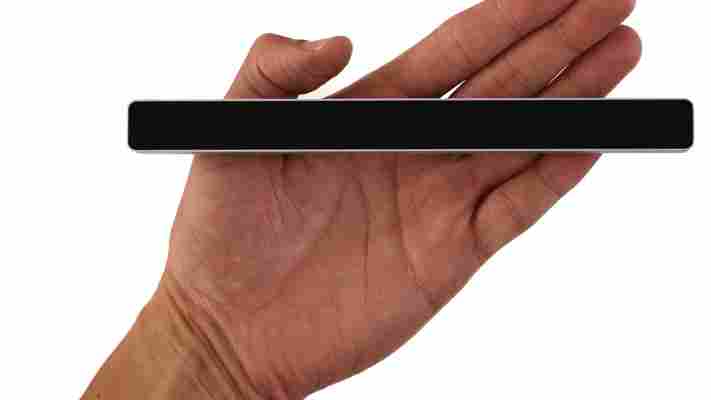It’s all about home invasion at CES 2014 as companies are continuing to develop products geared toward securing the growing connected home audience . But with so many similar products on the market, how do you know which gadget is right for you?

We met up with several smart home systems designed to help enrich your ever-connected lifestyle and to determine which product is best suited for you.
Now that we’ve finally seen the Canary in person , the product is as darling as its overwhelming Indiegogo success would indicate. The device is about the size of a 1-liter water bottle, and you can place it anywhere that overlooks the majority of the room you’re monitoring.
The neatest thing about the Canary is the user-friendly app interface. It’s extremely simple to program the device to send alerts when something’s amiss, such as excessive noise, motion, or rapid temperature changes.
If Canary recognizes anything strange, it will send a notification to your smart phone and give you options to call your backup contact, the police, or ignore. This streamlines the process with the hopes that you won’t panic too much if an emergency occurs in your home while you’re gone.
Canary can also record videos of various events and store them in the cloud for future reference. The company will also offer various tiers of subscriptions for extra cloud storage.
Price: $199 pre-order , with an estimated delivery date of July 2014
Of all the smart home security systems we checked out at CES, the Piper is one that gives you the most control over what goes on in your house. Just like Canary, you’ll get a camera and motion surveillance, while the Piper’s fisheye lens let you drag to change perspective and pinch to zoom to get a good view of nearly every corner of the room.
Those who like to fiddle with extra controls will also be happy to know that Piper can be integrated with Z-Wave sensors to add extra security around noise, motion, and power. Even if the Piper camera does not oversee a door or light, as long as you add a Z-Wave sensor, you can turn any object into an Internet-connected device.
You can also set Piper into various modes, such as “Work,” “Vacation,” or “Home” so it knows what to look out for depending on where you will be. You might not need to know if the light comes on or off while you’re home or at work and the kids will return from school, but it might be a good alert to have if everyone will be out on vacation for a week.
Price: $239 , available now in North America
Maybe you already have a ton of Internet-connected gadgets in your home and don’t want to be bothered to switch between apps to monitor each device. That’s where the Staples Connect hub comes in. The device consolidates all your Internet of Things products into one machine so you can check on everything from one app – from making sure the lights are on by sundown to adjusting the temperature to conserve as much energy as possible.
Staples is continuing to develop partnerships with existing smart gadgets. Current roster includes Kwikset, Netgear, Withings , Honeywell, Philips , GE, and Doorbot .
Price: $139 for a starter kit , available now
Related: Revolv review: An affordable smart home hub with one app to rule them all
For those who aren’t bothered by the idea of paying something to become your live-in “ Mother,” Sen.se’s lifestyle management device might be just the system to get you living properly in your home.
While it doesn’t actually turn your home “smart,” it turns everyday objects into Quantified Self products. For example, if you want to make sure you drink at least 8 ounces of water and take your pills daily, you can stick a Motion Cookie onto the item and Mother will monitor how often you are drinking and taking your pills.
All this data also gets turned into a visually-stunning launchpad where you can check your behavior over time. Since the cookies have different color tabs, you can also assign them to different members of your family. The Cookies can also be re-programmed to monitor different activities, in case you want it to detect unanticipated door motion when you’re away from home versus reminders to take your daily medicine.
Price: $222 for starter kit with four Cookies, extra $99 for additional set of four Cookies , shipping spring 2014
While it may be cool for some to see overwhelming details about their daily habits, Ambient Devices’ Joule smart meter monitor simplifies the data into something you can easily interpret: colors.
Rather than a smartphone push notification, the Joule connects with smart meters and glows in green, yellow, or red to denote the level of energy consumption in your house. The portable device also has a screen that tells you the exact cost of energy usage in real time, but you can also turn it face down to see just the colors.
“The portability allows users to walk around their house, play around with different appliances and investigate how each affect their home’s energy usage,” Ambient Devices’ CEO Pritesh Gandhi said.
Since its pilot tests in August 2013, Gandhi said companies have seen a 20 percent voluntary decrease in energy consumption during peak events (when the Joule would glow red).
The hope is that the colors will help incentivize people to use energy more efficiently, thus helping utility providers monitor power consumption.
Price: Unfortunately, this is not a product you can buy; Ambient Devices is currently working with North American utility companies to offer the Joule as part of the package that comes with the meter service. At the moment, the Joule is primarily available in California, a few mid-Atlantic states, and Ontario, Canada.
Oppo R819 launches with 4.7 720p display, 8MP camera and option to run stock Android 4.2.1
Chinese smartphone manufacturer Oppo has launched a 4.7-inch display-equipped smartphone with the catchy moniker of the R819.

Anonymous naming scheme aside, the device is solidly specced and includes a quad-core 1.2GHz processor, 720p HD display, 8-megapixel rear camera, 2-megapixel front-facing camera and 16GB of on-board storage.
While the device will arrive running Oppo’s own ‘Color ROM’, it said that it would also happily run stock Android, if the owner wished.
While many Chinese smartphone devices don’t make it to Europe or the US, potential purchasers can pre-order it now from Oppo’s European website for €269 , with delivery expected in early September.
➤ Oppo via Engadget
Featured Image Credit – Oppo
The $99 Eye Tribe Tracker lets you control a Windows PC, laptop or tablet with only your eyes
The majority of the innovation and experimentation surrounding user interface design at the moment – especially in consumer products – revolves around motion controls. Kinect , Leap Motion , MYO – it’s all about flapping our arms or jumping up and down. Eye tracking is totally different.

The Eye Tribe wants to take the technology mass market with the Tracker, a $99 piece of kit for Windows users. It’s a long, but thin bar that attaches to your PC, laptop or tablet via USB 3.0 and tracks the movement of your eyes to within the length of a fingertip.
It’s being shipped with an SDK that developers can use to integrate eye control into their existing apps and games. Example use-cases include playing the guitar with some scrolling sheet music, looking up to review some cooking instructions and playing video games as if you had Superman’s laser vision.
The Eye Tribe Tracker certainly has a lot of potential, but it’ll need the support of developers to make it truly revolutionary. Without software, it’s an idea and nothing more. Pre-orders are now live; The Eye Tribe expects the first units to ship before Christmas this year.
➤ The Eye Tribe
